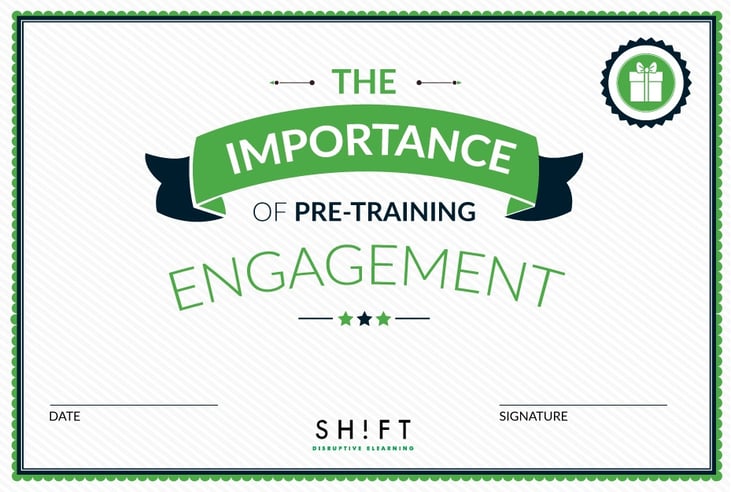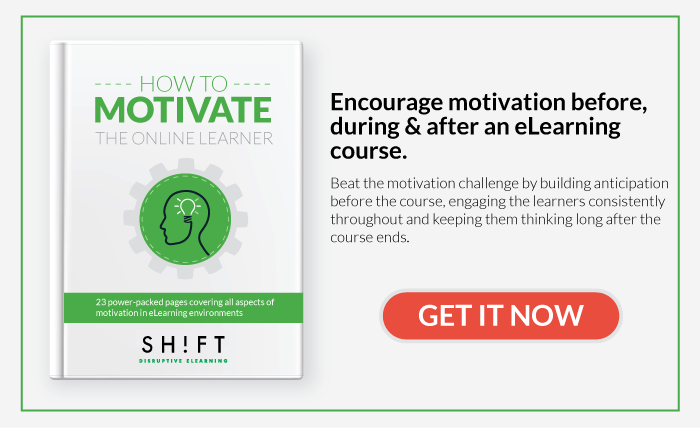Why You Need to Prime Your Learners Before They Start Your Courses
You spend a lot of time focusing on engagement within your courses, and this is indeed critical. You need engagement when it comes to employee training, onboard learning, and all other types of courses. But, what you may be overlooking is how to engage learners before they begin these courses. This is why pre-training engagement is so important.

What is Pre-Training Engagement?
Pre-training engagement is anything involving the effort you put into stimulating future learners for an upcoming course. It can involve surveys, assessments, sneak-peeks, and more. Whatever energy you direct toward your learners (not including outbound marketing and advertising for courses) is considered part of this.
Why You Should Stop Ignoring Pre-Training Engagement Efforts
Yes, your courses are necessary, and they should speak for themselves. But, what is going to happen when your participants come into the course with no excitement whatsoever? You’re going to end up with a ton of learners that didn’t absorb most of what they learned. Pre-training engagement is what primes learners for your courses and how you’re going to get your students excited enough to want to learn.
Without having a primer for the upcoming course, learners aren’t going to get everything they can from the learning materials. Your efforts before the course begins should be given as much weight as your responsive tools, your follow-up, and all other aspects of your learners’ course experience.
Doesn’t This Lead to High Expectations?
You may be questioning whether or not the risk of over-amplifying your course is going actually result in high expectations and disappointment in the course materials. This is a valid concern and one that you should pay attention to. Just know that to engage learners before they’re involved in the actual course materials, you shouldn’t be sending them hype about the course - at all. There are other ways (See point 6) to approach pre-training engagement that will be much more beneficial for all.
Why Aren’t Course Creators Giving Pre-Training Enough Attention?
It seems as though everyone in the industry is focused on engagement techniques. We read studies and articles that teach us how to appeal to target groups, and we implement the changes we need to optimize our courses. But, when it comes to getting learners engaged with incentives and assessments, we lack.
This could be due to the fact that we’re not taking our course launches seriously enough. Think about it: everyone taking the course could be a part of a group that we’re telling, “Hey, this is mandatory learning within this company.” And, with the perceived idea that our learners have to take it, we’re missing out on an opportunity that will lead to better information absorption - maybe even nullifying the need for follow-up learning materials.
Which Pre-Training Approaches Should You Try?
In the entertainment industry, trailers and previews are a great way to prime fans. In education, there are some primers that serve this same purpose. Some of them are effective, and some are not. All techniques need to be tested, as they vary based on the audience you work with and the information you deliver. Here are some approaches to try:- Incentives - You can try offering employees a reward for signing up for a course. For instance, offer a certificate of completion, and explain how this certificate is going to enhance the learner’s career. Get creative. Here are more ideas.
- Surveys - By giving learners a survey, before the course begins, you let them know that you’re thinking of them, weighing their thoughts and opinions, and making them feel like a part of the course experience. People love choice, and a pre-training survey is a great way to make learners feel like they’re being given more options, or are at least a part of a group who is making a decision.
- Skills & Knowledge Assessments - Send out a quick quiz to find out what learners already know about the topics to be presented in an upcoming course. Those who score well will feel proud, and those who score low will be anxious to learn more.
- Learning Preferences Assessments - Conducting a learning preferences assessment with your learners will create introspection as well as remind learners which aspects of the course they may need to focus more on (written, audio, visual). This can also provide you with valuable insight into which aspects of your course could use improvement - if you’re teaching a mostly visual group of learners, it can be a good idea to reformat your text documents into videos, etc.
Pre-training engagement is an aspect of your courses that you should be giving more attention to. It is what primes students for an optimized learning experience. The beauty is that you can even learn how to make your courses better in the process.
What approaches will you take with your future pre-training engagement efforts?
About the author:
Janice Kersh is an online learning maven at the Essay Writer company. She is also in love with reading and eating cookies.


